Pygmy Seahorse
Hippocampus bargibanti / denise / pontohi

Photo by Caparbio / CC BY-SA 3.0 via Wikimedia Commons
Pygmy Seahorses are the tiniest gems of the ocean, often smaller than a fingernail. Unlike their larger cousins who swim freely, most pygmies spend their entire lives on a single gorgonian sea fan, matching its color and texture so perfectly that they become invisible to the naked eye. Discovered accidentally in 1969 when a scientist was examining a collected coral sample, these micro-masters of camouflage are the ultimate test for a diver's eyesight and patience.
🔬Classification
📏Physical Features
🌊Habitat Info
⚠️Safety & Conservation
Identification Guide
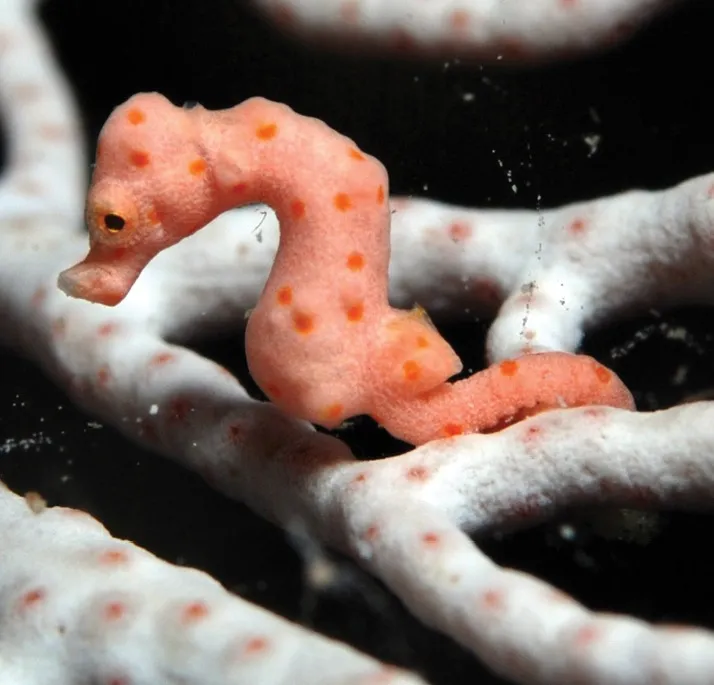
Photo by Reijnen BT / CC BY 3.0 via Wikimedia Commons
Field marks:
- Size: Tiny! usually under 2 cm.
- Camouflage: Body covered in tubercles (bumps) that mimic the polyps of their host sea fan (Bargibant's).
- Head: Short snout and a single gill opening on the back of the head (unlike standard seahorses).
- Tail: Prehensile tail wrapped tightly around a coral branch.
Common Species
- Bargibant's (H. bargibanti): The classic "pygmy". Lives on Muricella fans. Covered in bulbous tubercles. Pink or yellow.
- Denise's (H. denise): Slenderer, smoother skin, less bumpy. Looks like a tiny twig.
- Pontoh's (H. pontohi): Free-living (not on fans), often on algae or hydroids. White with yellow/pink patches and red filaments.
Differences from Juvenile Seahorses
- Standard juvenile seahorses look like miniature adults but swim freely or hold onto seagrass. Pygmies are morphologically distinct (short snout, single gill) and are almost always attached to specific hosts.
Top 10 Fun Facts about Pygmy Seahorse
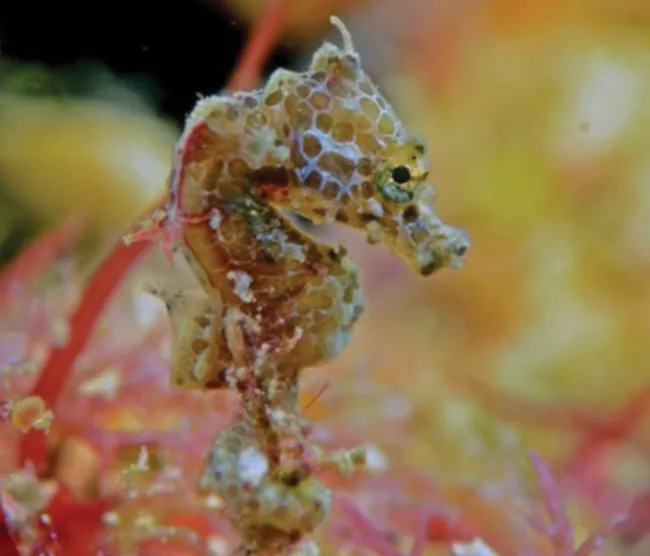
Photo by (Photo: Chao-Tsung Chen) Heard J / CC BY 4.0 via Wikimedia Commons
1. An Accidental Discovery
The first pygmy seahorse (H. bargibanti) wasn't discovered in the ocean. In 1969, scientist Georges Bargibant was dissecting a gorgonian coral in a lab when he noticed two tiny "bumps" on the coral were actually alive. They are so well camouflaged that even experts miss them.
2. Obligate Homebodies
Bargibant's Pygmy Seahorses are obligate residents, meaning they live exclusively on one species of gorgonian coral (Muricella). They are so adapted that they will die if placed on the wrong type of coral. They likely spend their entire adult life on a single fan.
3. Male Pregnancy (Mini Edition)
Like all seahorses, the male gets pregnant. However, unlike larger seahorses that have a pouch on their tail, pygmy seahorses brood their young in a trunk pouch. The male gives birth to 6–34 microscopic babies that are fully independent from birth.
4. No Eyelids
Pygmy seahorses do not have eyelids. This makes them extremely sensitive to light. Being blasted by powerful strobes or dive lights is blinding and stressful for them. Responsible divers use red light or limit their shots.
5. The "Smooth" Pygmy
While Bargibant's are bumpy, Denise's Pygmy Seahorse is the "supermodel" of the group—slender, smoother, and longer-necked. They are harder to spot because they often hide in the deeper, darker recesses of the sea fan.
6. The "Free-Roaming" Pontoh
Pontoh's Pygmy Seahorse broke the rules. Instead of being stuck on a deep sea fan, it lives in shallower water on algae (Halimeda) and hydroids. It’s a great option for divers who don't want to go deep to see a pygmy.
7. Head-Butting Rivals
Despite being the size of a grain of rice, males can be aggressive. They have been observed head-butting each other to compete for a female or territory on their sea fan. It’s the world’s cutest gladiator match.
8. Diet of Dust
What do you eat when you are 1 cm long? You eat things we can't even see. They feed on microscopic crustaceans and plankton drifting by their fan. Their snout works like a tiny pipette, sucking in food with precision.
9. Color Chameleons?
It was long thought they changed color to match their host. Research suggests that while they can change color, it’s a slow process. Mostly, they settle on a host that matches their color during their larval stage and stick with it.
10. The "Santa Claus" Pygmy
There is a variation of the Pontoh's pygmy found in Lembeh called the "Severnsi" (often considered a synonym). It is brown/red with white patches, looking remarkably like a tiny swimming Santa Claus suit.
Diving & Observation Notes
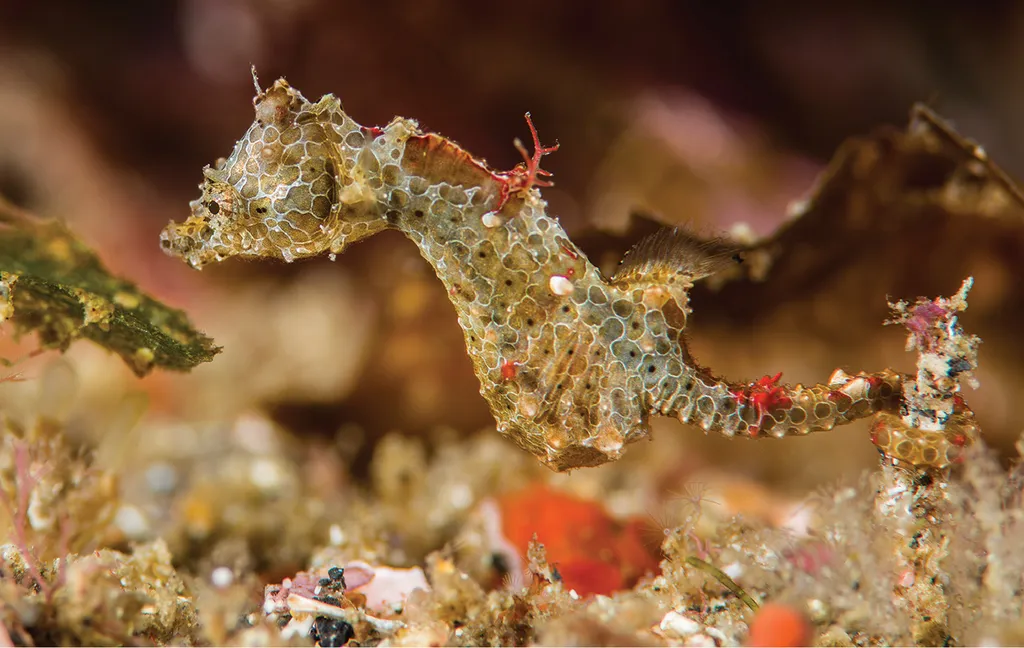
Photo by (photograph Richard Smith) Short G / CC BY 4.0 via Wikimedia Commons
🧭 Finding Pygmies
This is the ultimate "Where's Waldo". Look for large Muricella fans (usually orange or pink) at 20–30m. Don't look at the whole fan; scan the branches. Look for a "knot" that looks slightly different. If the dive guide starts banging their tank excitedly near a fan, go there.
🤿 Approach & Behavior
- Buoyancy is King: You must hover perfectly still next to the fan. If you kick the fan, you might kill the coral and the seahorse.
- No Touching: Never touch the fan to rotate it. Ask the guide to point it out with a light (briefly).
- Red Light: Use a red focus light. They are less sensitive to red light than white light.
📸 Photo Tips
- Macro Lens: You need a 100mm macro lens or a diopter (super macro). A GoPro is useless here.
- Focus: Focus on the eye. It's the only part that looks like an animal.
- Don't Fry Them: Limit your strobes. Take 1-2 shots and move on. They have no eyelids and can't close their eyes to the flash.
- Black Background: High shutter speed to kill ambient light makes the pink/orange fan pop against a black background.
⚠️ Ethics & Safety
- Do Not Harass: Some guides use a stick to poke the tail to make it turn around. Do not allow this. It stresses the animal and damages the host.
- Watch Your Air: You are often deep (25m+) and staring at a fan for 10 minutes. Check your NDL and air frequently.
🌏 Local Guide Nuggets
- Lembeh (Indonesia): The "Pygmy Seahorse House" dive site is legendary. Also look for Pontoh's in the shallows on seagrass.
- Raja Ampat (Indonesia): Almost every fan at "Melissa's Garden" seems to have one.
- Moalboal (Philippines): Known for easy-to-find Denise's Pygmies on the wall.
Best Places to Dive with Pygmy Seahorse
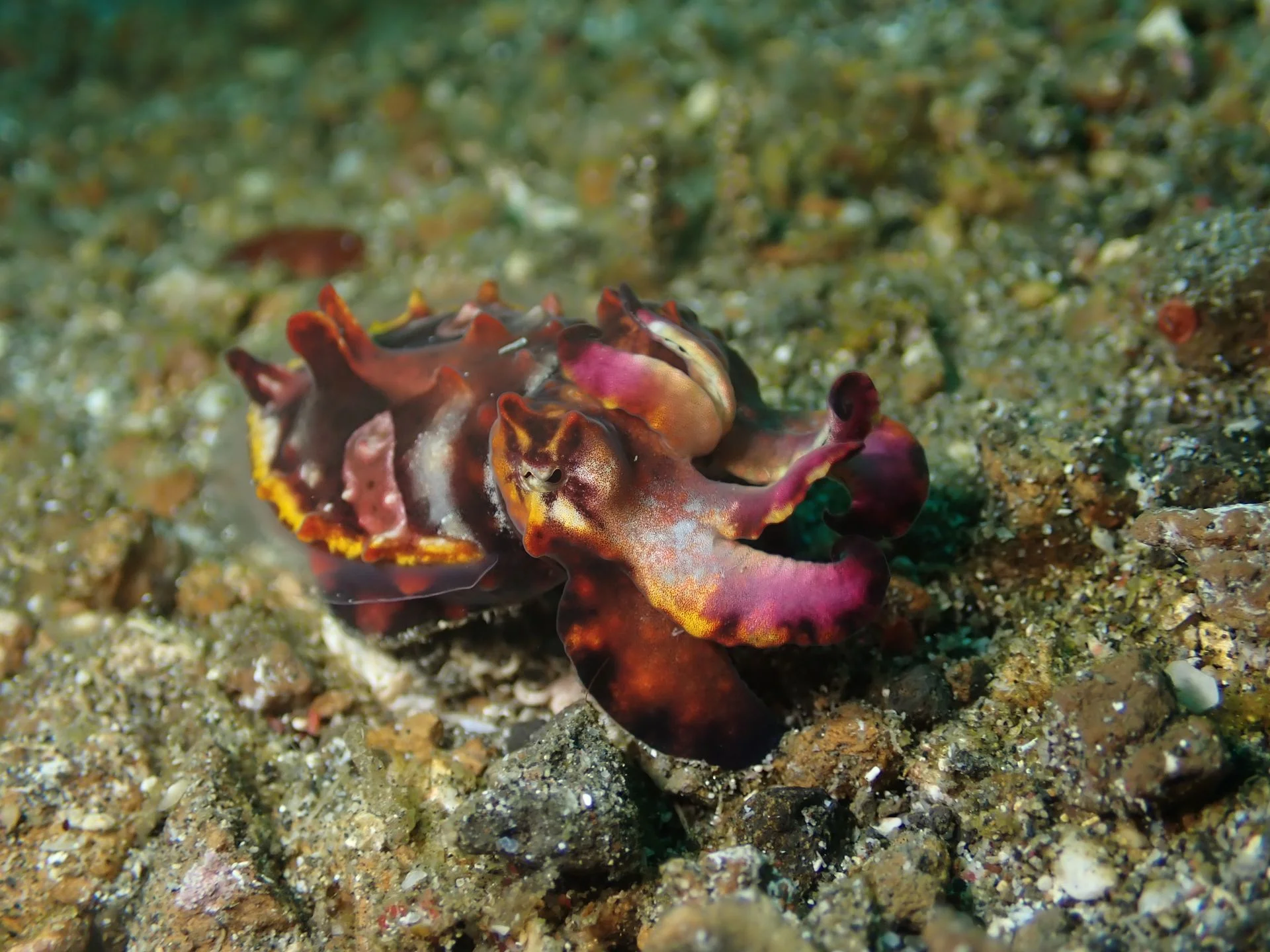
Lembeh
The Lembeh Strait in North Sulawesi has become famous as the muck‑diving capital of the world. At first glance its gently sloping seabed of black volcanic sand, rubble and discarded debris looks bleak. Look closer and it is teeming with weird and wonderful life: hairy and painted frogfish, flamboyant cuttlefish, mimic and blue‑ringed octopuses, ornate ghost pipefish, tiny seahorses, shrimp, crabs and a rainbow of nudibranchs. Most dives are shallow and calm with little current, making it an ideal playground for macro photographers. There are a few colourful reefs for a change of scenery, but Lembeh is all about searching the sand for critter treasures.
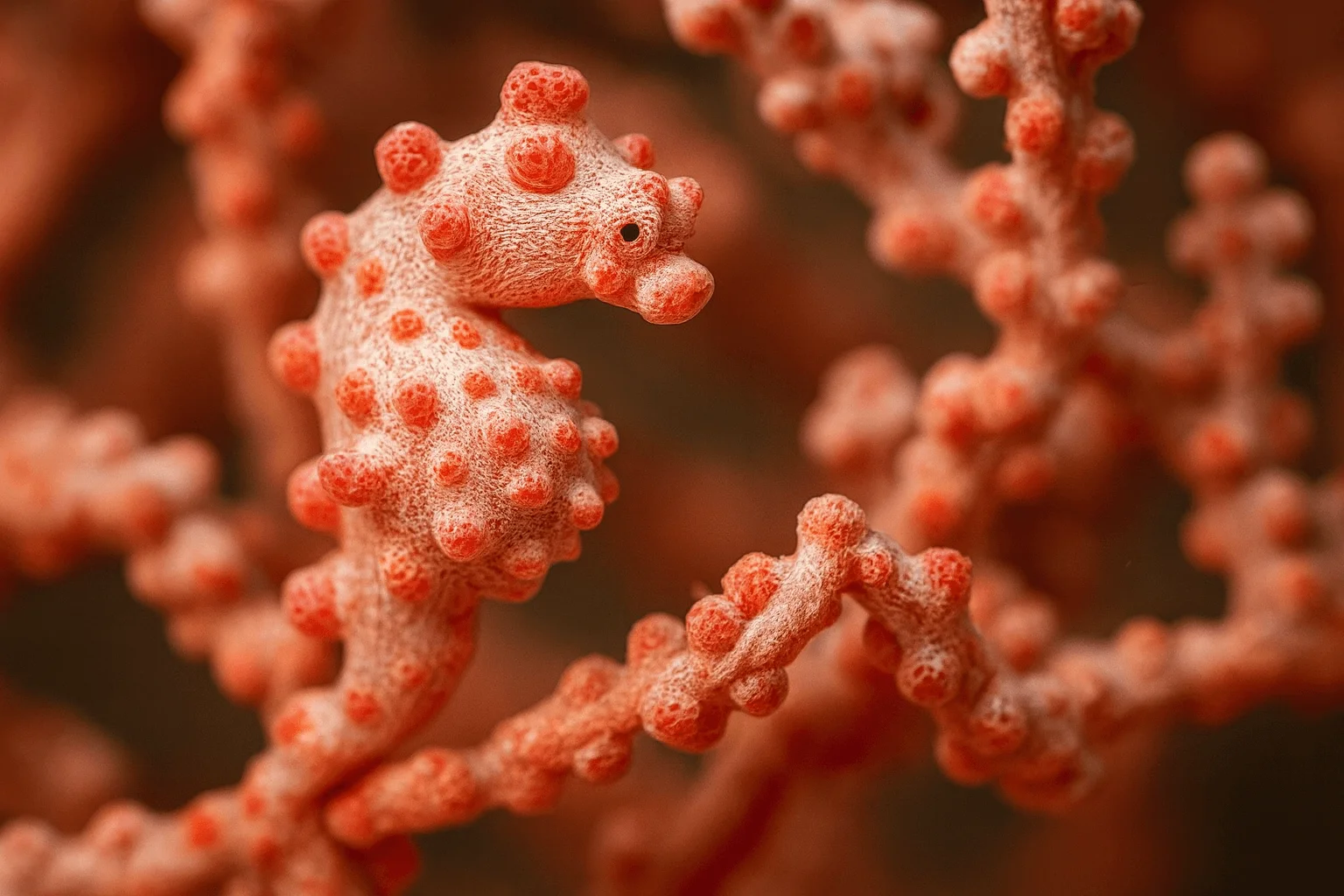
Anilao
Anilao, a small barangay in Batangas province just two hours south of Manila, is often called the macro capital of the Philippines. More than 50 dive sites fringe the coast and nearby islands, offering an intoxicating mix of coral‑covered pinnacles, muck slopes and blackwater encounters. Critter enthusiasts come for the legendary muck dives at Secret Bay and Anilao Pier, where mimic octopuses, blue‑ringed octopuses, wonderpus, seahorses, ghost pipefish, frogfish and dozens of nudibranch species lurk in the silt. Shallow reefs like Twin Rocks and Cathedral are covered in soft corals and teem with reef fish, while deeper sites such as Ligpo Island feature gorgonian‑covered walls and occasional drift. Because Anilao is so close to Manila and open year‑round, it’s the easiest place in the Philippines to squeeze in a quick diving getaway.

Raja Ampat
Raja Ampat, the “Four Kings,” is an archipelago of more than 1,500 islands at the edge of Indonesian West Papua. Its reefs sit in the heart of the Coral Triangle, where Pacific currents funnel nutrients into shallow seas and feed the world’s richest marine biodiversity. Diving here means gliding over colourful walls and coral gardens buzzing with more than 550 species of hard and soft corals and an estimated 1,500 fish species. You’ll meet blacktip and whitetip reef sharks on almost every dive, witness giant trevally and dogtooth tuna hunting schools of fusiliers, and encounter wobbegong “carpet” sharks, turtles, manta rays and dolphins. From cape pinnacles swarming with life to calm bays rich in macro critters, Raja Ampat offers endless variety. Above water, karst limestone islands and emerald lagoons provide spectacular scenery between dives.
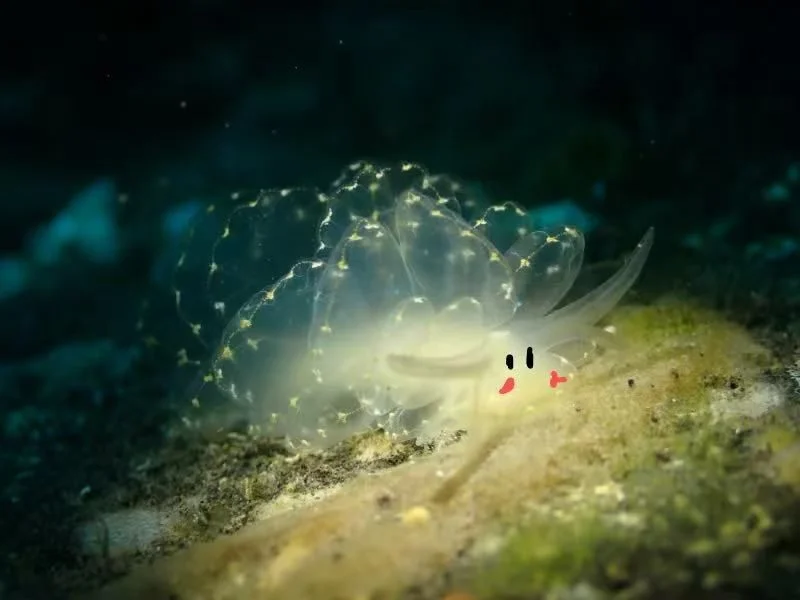
Tulamben(Bali)
Tulamben sits on Bali’s northeast coast and is best known for the USAT Liberty shipwreck – a 125‑metre cargo ship torpedoed in WWII that now lies just a short swim from shore. Warm water, mild currents and straightforward shore entries make diving here relaxed for all levels. Besides the wreck, divers can explore coral gardens, black‑sand muck sites and dramatic drop‑offs. Macro lovers will find nudibranchs, ghost pipefish, mimic octopus and pygmy seahorses, while big‑fish fans can encounter schooling jackfish, bumphead parrotfish and reef sharks. With a compact coastline packed with variety, Tulamben delivers world‑class wreck and critter diving without long boat rides.
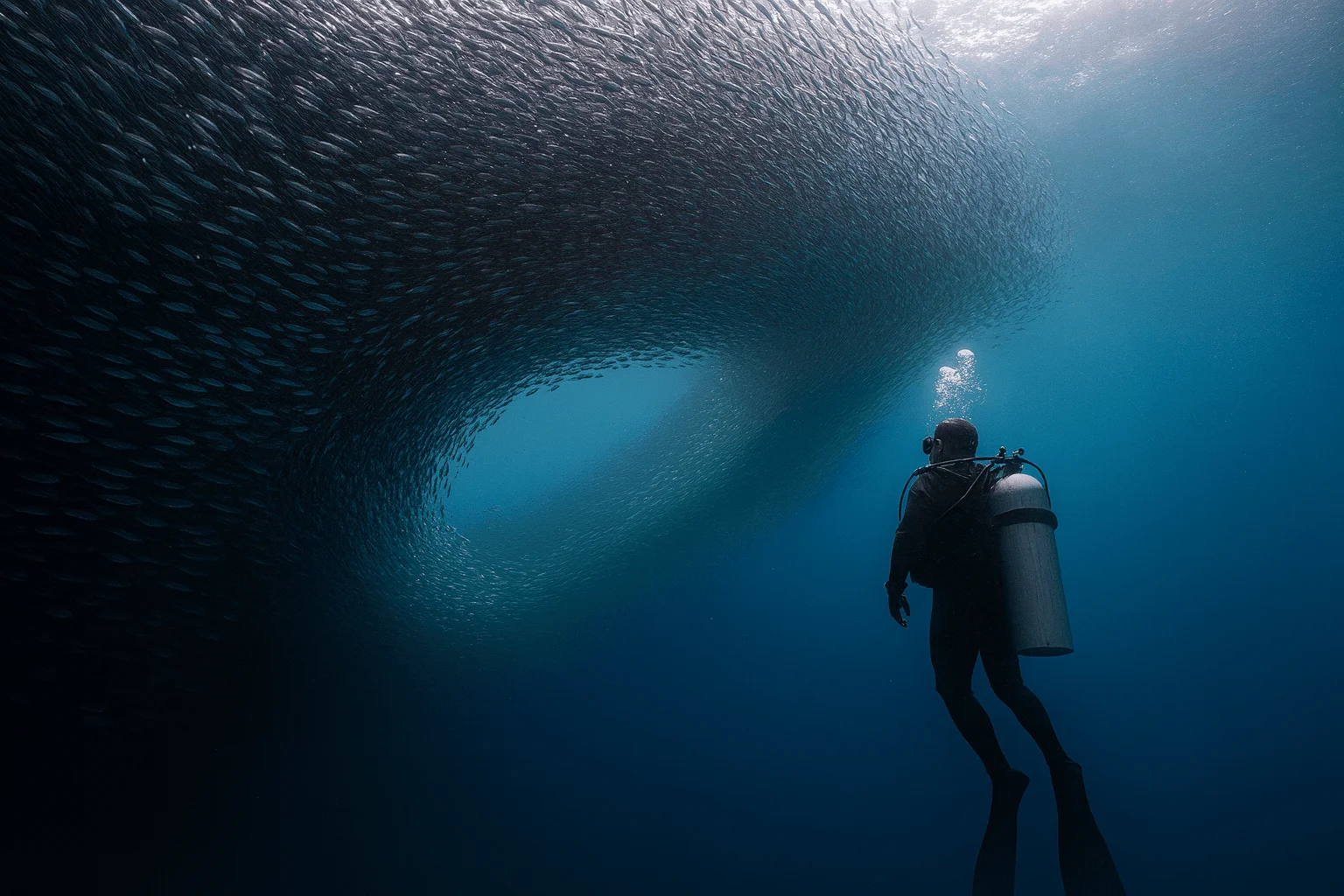
Moalboal
Moalboal is a laid‑back beach town on the west coast of Cebu known for its spectacular sardine run and easy access to Pescador Island. Vast clouds of millions of sardines swirl just off Panagsama Beach all year, creating a shimmering wall of fish that you can dive or snorkel through. Just offshore, the limestone island of Pescador offers steep walls, caverns and canyons covered in hard and soft corals; turtles, sea snakes, frogfish, schooling jacks and the occasional thresher or whitetip reef shark can be seen here. Many other sites along the coast feature shallow coral gardens and sandy slopes teeming with nudibranchs, cuttlefish and reef fish, making Moalboal perfect for both beginners and experienced divers.